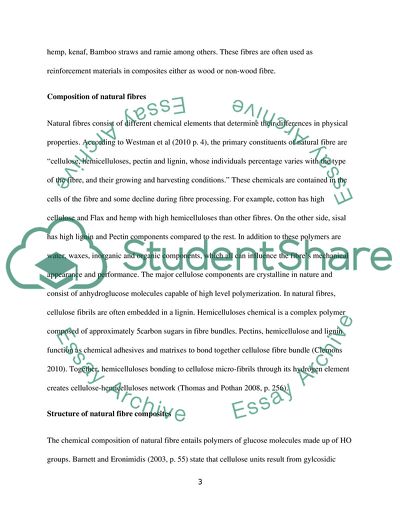Cite this document
(The Use of Natural Fibre Composites Case Study Example | Topics and Well Written Essays - 1750 words, n.d.)
The Use of Natural Fibre Composites Case Study Example | Topics and Well Written Essays - 1750 words. https://studentshare.org/engineering-and-construction/1878121-written-report-about-natural-fibre-composites
The Use of Natural Fibre Composites Case Study Example | Topics and Well Written Essays - 1750 words. https://studentshare.org/engineering-and-construction/1878121-written-report-about-natural-fibre-composites
(The Use of Natural Fibre Composites Case Study Example | Topics and Well Written Essays - 1750 Words)
The Use of Natural Fibre Composites Case Study Example | Topics and Well Written Essays - 1750 Words. https://studentshare.org/engineering-and-construction/1878121-written-report-about-natural-fibre-composites.
The Use of Natural Fibre Composites Case Study Example | Topics and Well Written Essays - 1750 Words. https://studentshare.org/engineering-and-construction/1878121-written-report-about-natural-fibre-composites.
“The Use of Natural Fibre Composites Case Study Example | Topics and Well Written Essays - 1750 Words”. https://studentshare.org/engineering-and-construction/1878121-written-report-about-natural-fibre-composites.


